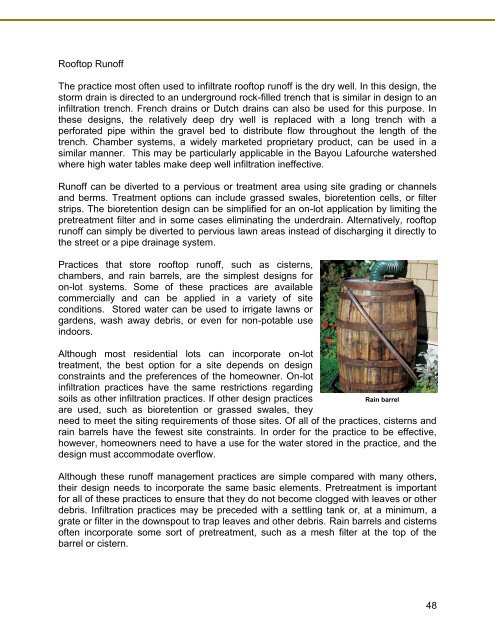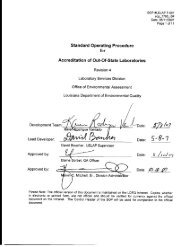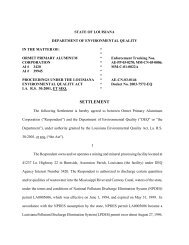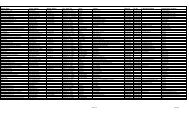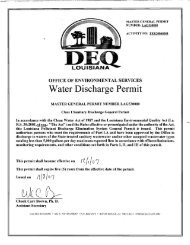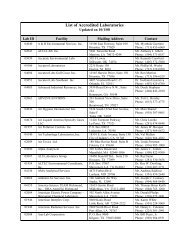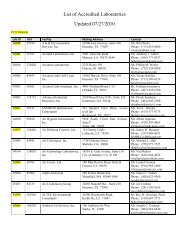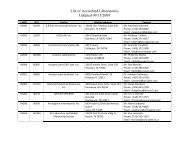Bayou Lafourche
Bayou Lafourche - LDEQ Nonpoint 319 Projects
Bayou Lafourche - LDEQ Nonpoint 319 Projects
- No tags were found...
Create successful ePaper yourself
Turn your PDF publications into a flip-book with our unique Google optimized e-Paper software.
Rooftop Runoff<br />
The practice most often used to infiltrate rooftop runoff is the dry well. In this design, the<br />
storm drain is directed to an underground rock-filled trench that is similar in design to an<br />
infiltration trench. French drains or Dutch drains can also be used for this purpose. In<br />
these designs, the relatively deep dry well is replaced with a long trench with a<br />
perforated pipe within the gravel bed to distribute flow throughout the length of the<br />
trench. Chamber systems, a widely marketed proprietary product, can be used in a<br />
similar manner. This may be particularly applicable in the <strong>Bayou</strong> <strong>Lafourche</strong> watershed<br />
where high water tables make deep well infiltration ineffective.<br />
Runoff can be diverted to a pervious or treatment area using site grading or channels<br />
and berms. Treatment options can include grassed swales, bioretention cells, or filter<br />
strips. The bioretention design can be simplified for an on-lot application by limiting the<br />
pretreatment filter and in some cases eliminating the underdrain. Alternatively, rooftop<br />
runoff can simply be diverted to pervious lawn areas instead of discharging it directly to<br />
the street or a pipe drainage system.<br />
Practices that store rooftop runoff, such as cisterns,<br />
chambers, and rain barrels, are the simplest designs for<br />
on-lot systems. Some of these practices are available<br />
commercially and can be applied in a variety of site<br />
conditions. Stored water can be used to irrigate lawns or<br />
gardens, wash away debris, or even for non-potable use<br />
indoors.<br />
Although most residential lots can incorporate on-lot<br />
treatment, the best option for a site depends on design<br />
constraints and the preferences of the homeowner. On-lot<br />
infiltration practices have the same restrictions regarding<br />
soils as other infiltration practices. If other design practices<br />
Rain barrel<br />
are used, such as bioretention or grassed swales, they<br />
need to meet the siting requirements of those sites. Of all of the practices, cisterns and<br />
rain barrels have the fewest site constraints. In order for the practice to be effective,<br />
however, homeowners need to have a use for the water stored in the practice, and the<br />
design must accommodate overflow.<br />
Although these runoff management practices are simple compared with many others,<br />
their design needs to incorporate the same basic elements. Pretreatment is important<br />
for all of these practices to ensure that they do not become clogged with leaves or other<br />
debris. Infiltration practices may be preceded with a settling tank or, at a minimum, a<br />
grate or filter in the downspout to trap leaves and other debris. Rain barrels and cisterns<br />
often incorporate some sort of pretreatment, such as a mesh filter at the top of the<br />
barrel or cistern.<br />
48


